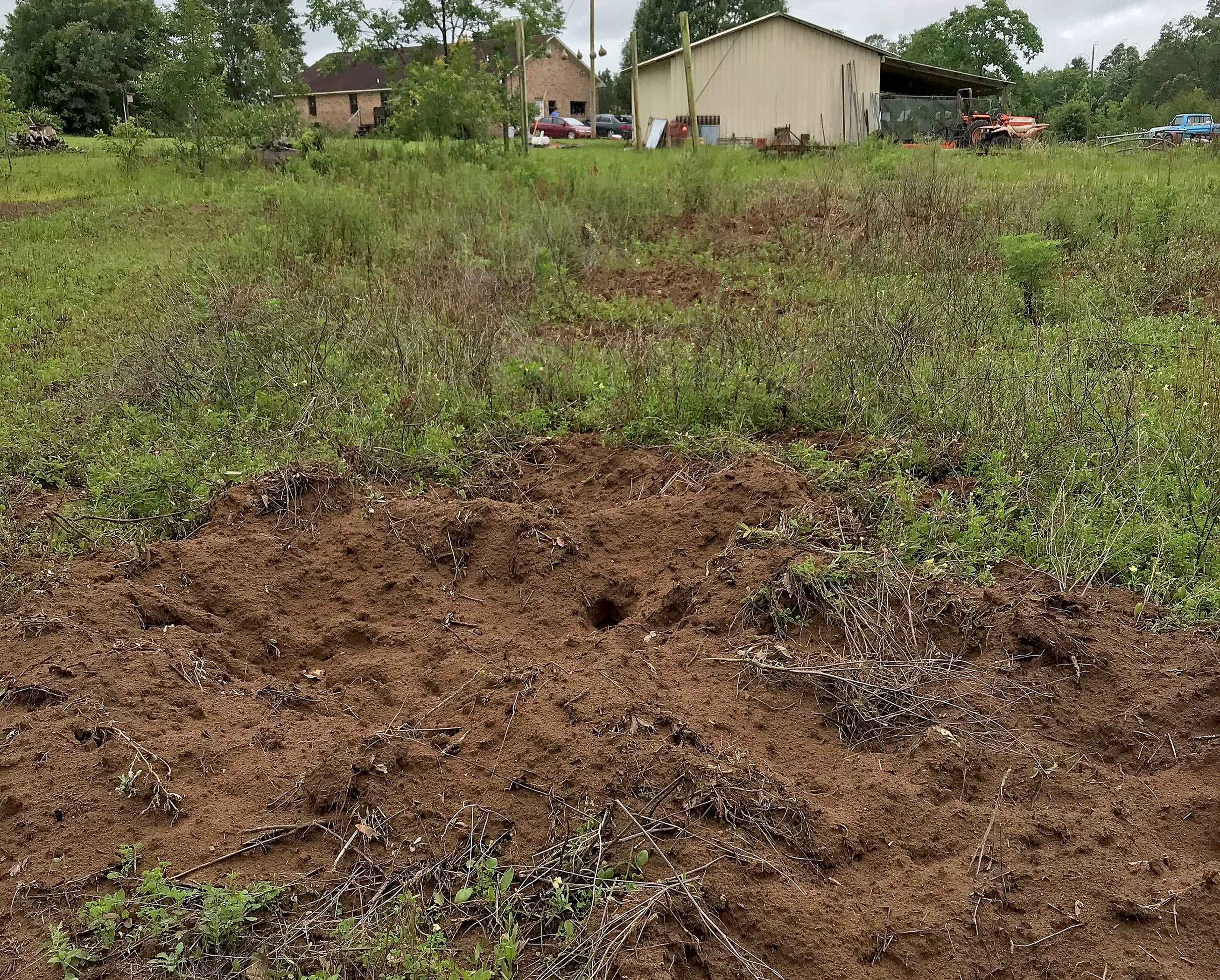By DAVID RAINER, Alabama Department of Conservation and Natural Resources
Anyone who has explored Alabama’s great outdoors or spent time on a tractor cultivating an agricultural crop knows how destructive feral swine can be on the landscape.
Because of the prodigious reproductive capacity of these wild hogs, controlling the populations is difficult at best, and many researchers believe that total eradication of this invasive species is not a viable option.
Some are looking to methods other than hunting or trapping to control the hog numbers, and Texas recently approved the use of a warfarin-based toxicant called Kaput against the burgeoning swine population in that huge state. This action has spurred renewed discussion on the research and developments surrounding various types of feral hog toxicants.
The Alabama Department of Conservation and Natural Resources (ADCNR), the Alabama Department of Agriculture and Industries (ADAI), the Alabama Department of Environmental Management (ADEM), the U.S. Department of Agriculture’s (USDA) Wildlife Services Division, and the Soil and Water Conservation Committee met recently and came away with a unified position against approving any toxicant, including Kaput, in Alabama at the current time. These entities will continue to stay up-to-date on the latest research and real-world usage of toxicants and periodically revisit the issue.
“Since feral swine are such a huge issue, we thought it best to have a meeting of the top agency leaders for departments that are working in this space to make sure we are all in agreement with what is best for Alabama moving forward,” said Conservation Commissioner Chris Blankenship. “We had an open and frank discussion about the issue, and all agreed that, based on the information we have right now, Kaput was not the best toxicant for feral hog control in Alabama. I appreciate Commissioner (Rick) Pate and his staff, Director (Chuck) Sykes and the others who are very well versed on this issue. I think all of us coming together to discuss this and hearing all perspectives was very helpful.”
ADCNR Wildlife and Freshwater Fisheries Director Sykes said at the present time he is not sold on the idea that Kaput is the best solution to a difficult problem.
“Based on the data we have now, I’m not in support of it,” Director Sykes said of the use of Kaput. “There are a lot of questions about the use of toxicants. We’ve been working with the USDA for more than five years on the use of sodium nitrite.”
The warfarin-based toxicants rely on blood-thinning effects to dispatch the hogs. However, the hog may have to ingest the Kaput bait multiple times over a long period before it kills the animal. Sodium nitrite affects the hog’s ability to transfer oxygen in its system, and it works quickly. Director Sykes said the sodium nitrite bait is going through the licensing process, and he hopes it will be approved in the next couple of years.
“Sodium nitrite has proven to be very lethal, very effective and very humane in the way it dispatches the hogs during trial usage in Alabama, so we know it works here,” Director Sykes said. “And it doesn’t continue to kill on down the food chain line. The pig just eats the product, gets sleepy, lies down and doesn’t wake up. The product depletes the oxygen in the bloodstream.”
Director Sykes said the sodium nitrite is administered through a peanut butter-based bait that won’t be available to the general public.
“Toxicants won’t be something that will be available on the shelf at the local co-op for everybody to use,” he said. “This will be for trained, licensed applicators, federal agencies and state agencies to use.”
ADAI Commissioner Pate said any toxicants like Kaput or sodium nitrite will have to be licensed by his agency before they become legal to use.
The ADAI’s current stance on a warfarin-based toxicant is:
- There remains insufficient data to justify registration in Alabama considering the toxicity of the product and the known issues that may potentially result from its use.
- There are significant differences in the environmental landscape and environmental conditions that exist between Alabama and Texas, where the product is registered for use.
- The label and the ability of the applicator to follow the instructions on the label are of great concern.
- There appears to be a level of training and education (product specific) that would need to take place, especially in the case of private applicator use of the product.
- Hogs need to feed multiple times to get the desired result.
- The potential for sub-lethal dosing and resistance remains a concern.
“We don’t want to minimize the (hog) problem, because we know it’s huge,” Commissioner Pate said. “The problem is real. We want to take out as many pigs as possible, but we want to do it the right way. We don’t want to jump the gun on this toxicant and regret it down the road. Smart people are working on solutions. We’re trying to do as much as we can as fast as we can.”









